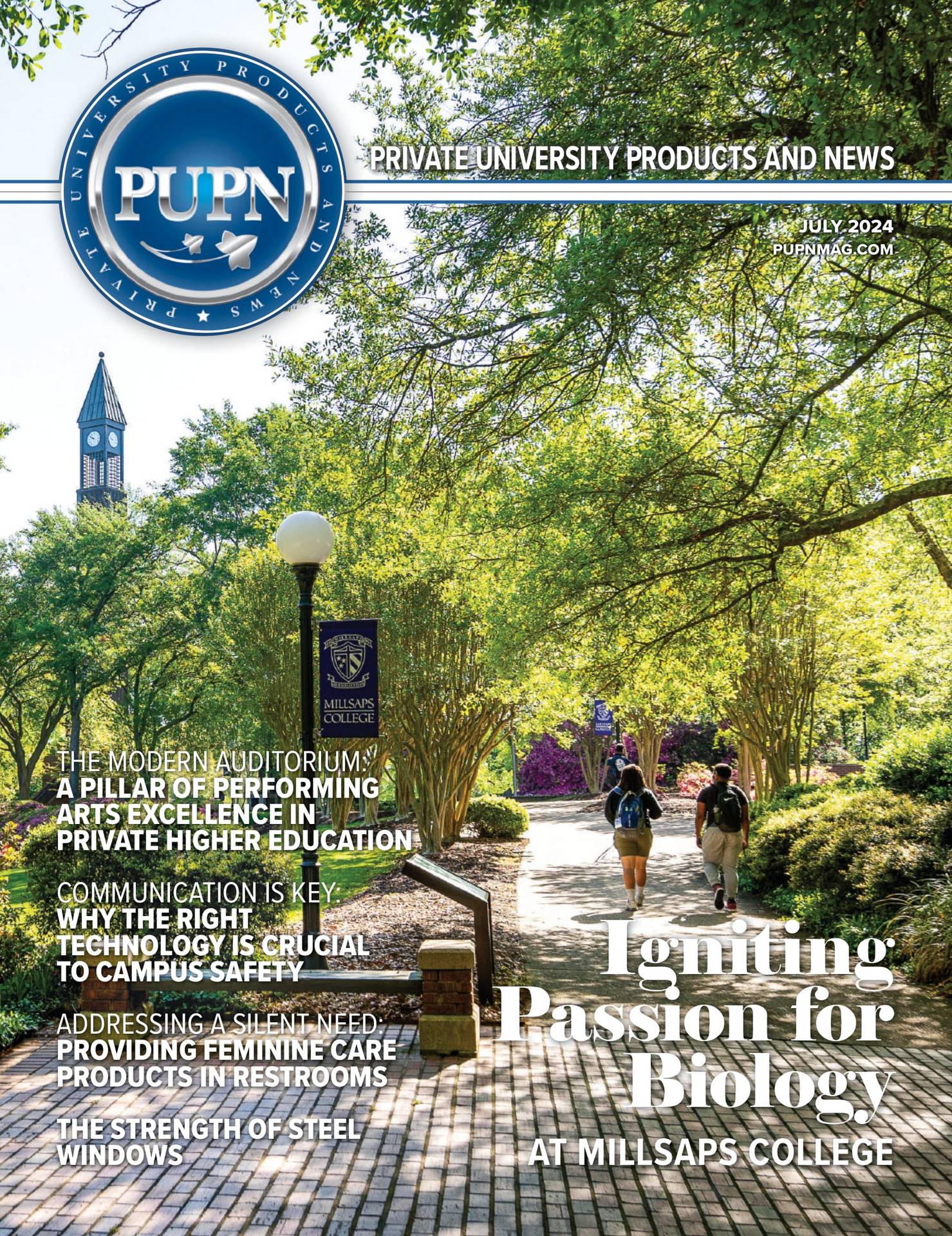Fostering Performance Flexibility at Wartburg College
At Wartburg College, the integration of Wenger’s Transcend™ Active Acoustic System has been a game-changer. Wartburg faced the challenge of revamping its Neumann Auditorium, a dated venue initially designed for spoken-word events and religious services. Because the acoustics were extremely dry, it was a difficult performance space for Wartburg’s choral groups, often singing classical works intended for cavernous, cathedral-like spaces. Acoustically dry environments also do not provide adequate aural feedback to the singers or director.
“With singing and with playing an instrument, so much of it is psychological,” says Dr. Lee Nelson, director of the Wartburg Choir. “If the room’s not helping you sing or project your sound, you start working harder and using poor technique.”
Many colleges, universities and even high schools face this problem: no performance venue is ideal for all types of ensembles. Explains Nelson, “If it’s good for the band, it’s bad for the choir. If it’s good for the choir, it’s bad for the band.” He adds, “Neumann Auditorium was good for our instrumental ensembles, not great for the orchestra and downright terrible for the choir.”
While the acoustics of a reverberant room can be tamed with traditional sound absorption solutions like fabric banners, it had been impossible to create a more reverberant space in a dry acoustical environment—until Transcend.
Instead of an expensive renovation or new construction project, Neumann Auditorium was transformed from a dry acoustical space into an acoustically versatile venue suitable for choir, band, orchestra or other ensembles.
To develop the groundbreaking Transcend System, Wenger partnered with the legendary audio company HARMAN Professional. A unique system of microphones, digital signal processing technology and precisely located speakers customize the acoustic environment, enabling optimization for both choral and instrumental performances. The system also ensures a more consistent sound throughout the auditorium. Every Neumann audience member—even those under the balcony—enjoys great sound quality.
Although the technology behind Transcend is sophisticated, users can easily switch between acoustic presets through a simple touch-screen interface. At the touch of a button, Neumann Auditorium can have an acoustical response that sounds as lively as a Gothic cathedral.
“You can simulate any acoustic you want. It’s virtually limitless,” Nelson explains. “You could create a choral/orchestral performance setting, a choral setting for cathedral performances and a setting for a piano concerto—all within the same concert if you wish. And, all settings can be stored and recalled at any time.”
This transformation has improved performance quality in Neumann Auditorium and turned this venue into a recruitment asset for Wartburg College, attracting both events and talented student musicians.
Revolutionizing Music Practice at Cleveland Institute of Music
For the Cleveland Institute of Music (CIM), the planning process for a new residence hall included a desire for state-of-the-art practice spaces to benefit student musicians. Given CIM’s role as a leading American conservatory, practice space was prioritized over the lounges or exercise rooms typical in student housing.
The solution was found in Wenger’s SoundLok® Practice Rooms equipped with Virtual Acoustic Environment (VAE®) technology. These rooms offer sound isolation, realistic acoustical simulations of nine different performance environments, and digital record/playback capabilities, catering to both individual and small ensemble practices.
“We recommended Wenger to our real estate developer as a leader in this industry,” explains Eric Bower, CIM’s senior vice president. “From our perspective, this was an easy call.” CIM had been ordering Wenger equipment for years, including conductor’s equipment, music stands, orchestra chairs and cello chairs.
Early in the planning process, both traditional stick-built rooms and Wenger’s modular practice rooms were evaluated. Developer NewBrook Partners also hired an acoustician to review options. “We considered stick-built practice rooms but couldn’t figure out how to achieve the quality of Wenger rooms by building them,” says Guy Totino, principal with NewBrook. “Wenger technology for sound isolation and active acoustics is state of the art and unequivocally the best for sound.”
Selecting the Wenger practice rooms was a confidence-building moment for entire project team, according to Denver Brooker, architect/principal with VOCON. “Wenger had completed many projects successfully,” he notes. “With Wenger’s reputation, we knew that the practice rooms would perform as expected.”
During the installation process for the 22 SoundLok rooms, Bower was in close contact with the Wenger team; the timeline was very tight. He said Wenger was “extremely efficient and very responsive” in addressing any issues. “I had good working relationships with the installers, along with the Wenger office personnel handling the contracts and logistical details.” Bower adds, “All and all, it was a good experience.”
He noted the immediate positive response from students. “The students realized the benefits right away. You can play Bach in a cathedral setting—it’s great!” This technology not only enhanced their practice experience but also contributed significantly to their overall educational journey, including helping them better prepare for real-world performance scenarios.
The VAE technology enabled students to practice in various acoustical settings at the touch of a button, greatly enhancing their learning experience. The advanced ventilation system and keycard access further added to the functionality and security of these spaces.
“We’re extremely happy with these Wenger practice rooms—they are so very important to our students,” Bower says. “They were the right solution for our student housing facility.”
The integration of Wenger’s virtual acoustic technologies at Wartburg College and CIM showcases the significant advancements available for music performance and education. Wartburg’s Neumann Auditorium, transformed by the Transcend™ System, now offers a versatile acoustic environment suitable for various ensembles. CIM’s residence hall equipped with SoundLok® Practice Rooms and VAE® technology provides acoustic simulations for effective, realistic practice. These innovations enhance venue flexibility and improve educational outcomes, reinforcing the key role such technology can play in shaping music education today and in the future.










